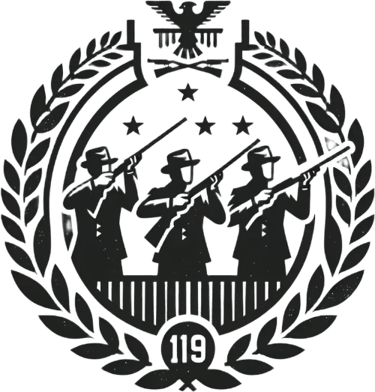William Tell
The Legend of the Swiss Freedom Hero
HISTORIER
4/4/20252 min read


William Tell is one of Switzerland's most famous national heroes, a legendary figure known for his courage, his precision with the crossbow, and his role in the struggle against tyranny. Although his historical existence is debated, the story about him has become a powerful symbol of Swiss independence and the fight for freedom.
The Story as It Is Told
The legend unfolds in the early 14th century in the canton of Uri, a time when parts of Switzerland were subject to the Austrian Habsburg dynasty. The tyrannical bailiff Albrecht Gessler, representing the Habsburgs, allegedly placed his hat on a pole in the square of Altdorf and demanded that everyone passing by bow to it as a sign of submission.
William Tell, a skilled hunter and renowned crossbowman from Bürglen, refused to bow to the hat. As punishment, Gessler forced him to perform a life-threatening act: Tell had to shoot an apple off his own son Walter's head with a single shot from his crossbow. Against all odds, Tell succeeded in this incredible feat.
When Gessler asked why Tell had prepared a second arrow before the shot, Tell honestly replied that it was intended for Gessler himself, had the first arrow struck his son. Enraged, Gessler had Tell arrested, intending to imprison him for life in the castle of Küssnacht.
During transport across Lake Lucerne, a violent storm broke out. Since Tell was an experienced boatman, the guards untied his bonds so he could steer the boat safely through the storm. Tell seized the opportunity to steer the boat close to the shore, jumped to safety onto a rock ledge (now known as Tellsplatte), and pushed the boat back out.
Later, Tell lay in ambush in a hollow way (Hohle Gasse) near Küssnacht and shot Gessler with his crossbow. This assassination of the tyrant is often seen as the catalyst for the rebellion that led to Swiss sovereignty and the formation of the Old Swiss Confederacy.
History or Legend?
There is no reliable historical evidence from the 14th century confirming that William Tell actually lived or that the events occurred exactly as the legend describes. Historians believe the story is likely an amalgamation of older myths and legends (similar stories about a master marksman forced into a perilous shot exist in other cultures, such as the Danish legend of Palnatoke).
Regardless of historical truth, the narrative emerged as a crucial part of Swiss identity and the struggle for independence from the Habsburgs.
William Tell's Significance
The German poet Friedrich Schiller immortalized the legend with his famous play "Wilhelm Tell" in 1804. This play, along with Gioachino Rossini's opera of the same name, significantly contributed to spreading the story internationally and cementing Tell's status as a universal symbol of:
Resistance against tyranny: His refusal to bow to Gessler's hat.
Individual courage: His willingness to stand up against unjust power.
The struggle for freedom: His actions serving as inspiration for a larger uprising.
Skill and precision: His mastery of the crossbow.
Even today, William Tell remains an important figure in Swiss culture and a symbol of the country's values of freedom, independence, and democracy. His story reminds us of the importance of standing up for what is right, even when facing overwhelming power.
Historic Shooters
Explore stories about the most remarkable shooters and their incredible achievements.
Biografier
geir@otimo.no
© 2025. All rights reserved.
